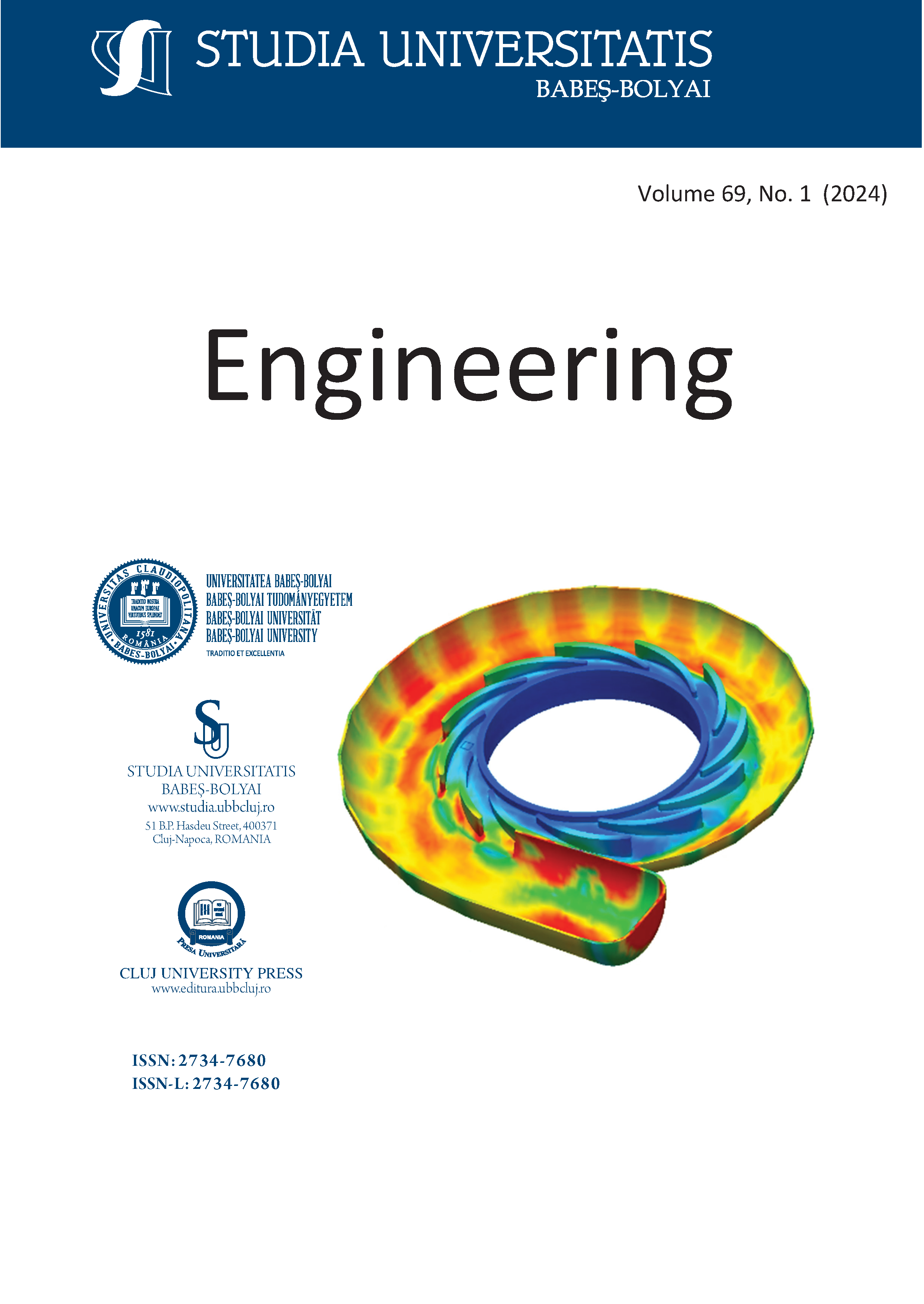Computational algorithm for evaluating gravitational and inertial loads acting on an industrial robot for palletizing operations
DOI:
https://doi.org/10.24193/subbeng.2024.1.2Keywords:
industrial robot, optimal structure, calculus algorithm, palletizing, unfavorable positionAbstract
This paper introduces a computational algorithm designed to calculate the gravitational and inertial loads affecting a four-axis numerically controlled (NC) industrial robot (IR) used in palletizing operations. The methodology includes the development of precise calculation models that account for the dynamic interactions between the robot’s mechanical components and its operational environment. These models enable the accurate determination of load distributions and stresses on each axis, which are critical for optimizing the robot’s performance and ensuring reliable operation under various loading conditions. The algorithm can be applied to the optimization and refinement of existing robotic systems, as well as to the design of new robots tailored for specific industrial applications.
References
G. Gamazeliuc, O. Ulerich, E. Rolea, M. Mărgăritescu, Implementation of Human-Robot Interaction Through Hand Gesture Recognition Algorithms, International Conference on Reliable Systems Engineering (ICoRSE) - 2023, D.D. Cioboată, Ed., Cham: Springer Nature Switzerland, 2023, pp. 147–154. doi: 10.1007/978-3-031-40628-7_12.
B.M. Verdete, C. Pupăză, G. Alexandru, Reduced order model for evaluating the temperature gradients of the surfacing weld process, RRIA, 33(1), pp. 7–20, Mar. 2023, doi: 10.33436/v33i1y202301.
IRB 660, M2004, Product specification. Accessed: Jul. 16, 2024. [Online]. Available: https://search.abb.com/library/Download.aspx?DocumentID=3HAC023932-001&LanguageCode=en&DocumentPartId=&Action=Launch
M.-A. Stamate, A.-F. Nicolescu, C. Pupază, Mathematical model of a multi-rotor drone prototype and calculation algorithm for motor selection, Proceedings in Manufacturing Systems, 12(3), 2017, pp. 119–128.
C.G. Coman, A.F. Nicolescu, C.A. Cristoiu, Calculus algorithm for evaluation of gravitational and inertial loads acting on a 6 dof articulated arm type industrial robot, Proceedings in Manufacturing Systems, 12(4), 2017, pp.187-194.
C. Dumitrașcu, F.A. Nicolescu, C.A. Cristoiu, Optimized overall design of a robotic arc welding cell and calculation procedures for optimal selection of ir motors, Proceedings in Manufacturing Systems, 16(2), 2021, pp. 75-88.
A.M. Ivan, A.F. Nicolescu, G.C. Avram, L Stan, Robotic deburring cell virtual prototyping, Proceedings in Manufacturing Systems,10(4), 2015, pp. 183-188.
Downloads
Published
How to Cite
Issue
Section
License
Copyright (c) 2024 Studia Universitatis Babeș-Bolyai Engineering

This work is licensed under a Creative Commons Attribution-NonCommercial-NoDerivatives 4.0 International License.





 © Studia Universitatis Babeş-Bolyai Engineering. Published by Babeș-Bolyai University.
© Studia Universitatis Babeş-Bolyai Engineering. Published by Babeș-Bolyai University.